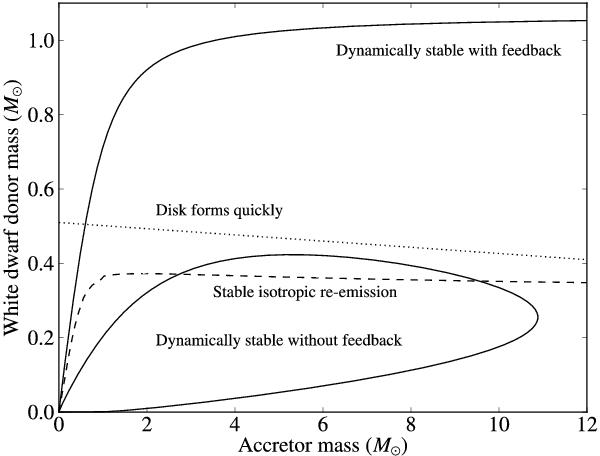Fig. 3

Stability regimes in terms of zero-temperature helium white dwarf donor mass versus accretor mass. The upper solid curve is the upper limit for dynamical stability in the presence of an accretion disk that feeds back angular momentum, where all transferred matter is lost via isotropic re-emission. The dashed curve is the upper limit for isotropic re-emission (i.e. if the system lies above this curve, the accretor will be engulfed by transferred matter). The lower solid curve encloses the parameter space where systems are dynamically stable in the absence of angular momentum feedback. The dotted curve indicates a very rough estimate of the upper donor mass for which there is enough time to form an accretion disk and suppress the no-feedback instability, based on Verbunt & Rappaport (1988).
Current usage metrics show cumulative count of Article Views (full-text article views including HTML views, PDF and ePub downloads, according to the available data) and Abstracts Views on Vision4Press platform.
Data correspond to usage on the plateform after 2015. The current usage metrics is available 48-96 hours after online publication and is updated daily on week days.
Initial download of the metrics may take a while.


